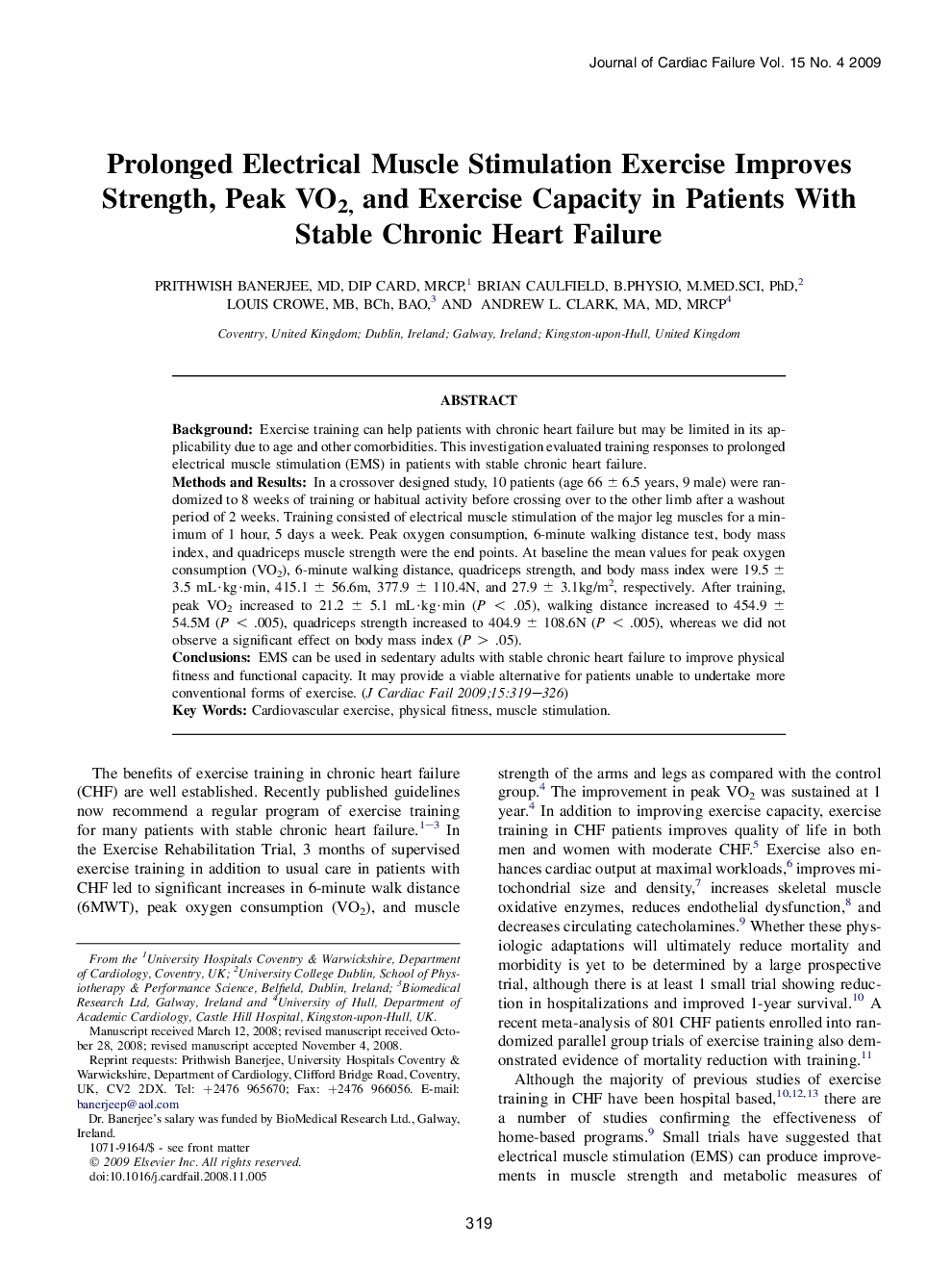| کد مقاله | کد نشریه | سال انتشار | مقاله انگلیسی | نسخه تمام متن |
|---|---|---|---|---|
| 2960644 | 1178364 | 2009 | 8 صفحه PDF | دانلود رایگان |

BackgroundExercise training can help patients with chronic heart failure but may be limited in its applicability due to age and other comorbidities. This investigation evaluated training responses to prolonged electrical muscle stimulation (EMS) in patients with stable chronic heart failure.Methods and ResultsIn a crossover designed study, 10 patients (age 66 ± 6.5 years, 9 male) were randomized to 8 weeks of training or habitual activity before crossing over to the other limb after a washout period of 2 weeks. Training consisted of electrical muscle stimulation of the major leg muscles for a minimum of 1 hour, 5 days a week. Peak oxygen consumption, 6-minute walking distance test, body mass index, and quadriceps muscle strength were the end points. At baseline the mean values for peak oxygen consumption (VO2), 6-minute walking distance, quadriceps strength, and body mass index were 19.5 ± 3.5 mL·kg·min, 415.1 ± 56.6m, 377.9 ± 110.4N, and 27.9 ± 3.1kg/m2, respectively. After training, peak VO2 increased to 21.2 ± 5.1 mL·kg·min (P < .05), walking distance increased to 454.9 ± 54.5M (P < .005), quadriceps strength increased to 404.9 ± 108.6N (P < .005), whereas we did not observe a significant effect on body mass index (P > .05).ConclusionsEMS can be used in sedentary adults with stable chronic heart failure to improve physical fitness and functional capacity. It may provide a viable alternative for patients unable to undertake more conventional forms of exercise.
Journal: Journal of Cardiac Failure - Volume 15, Issue 4, May 2009, Pages 319–326